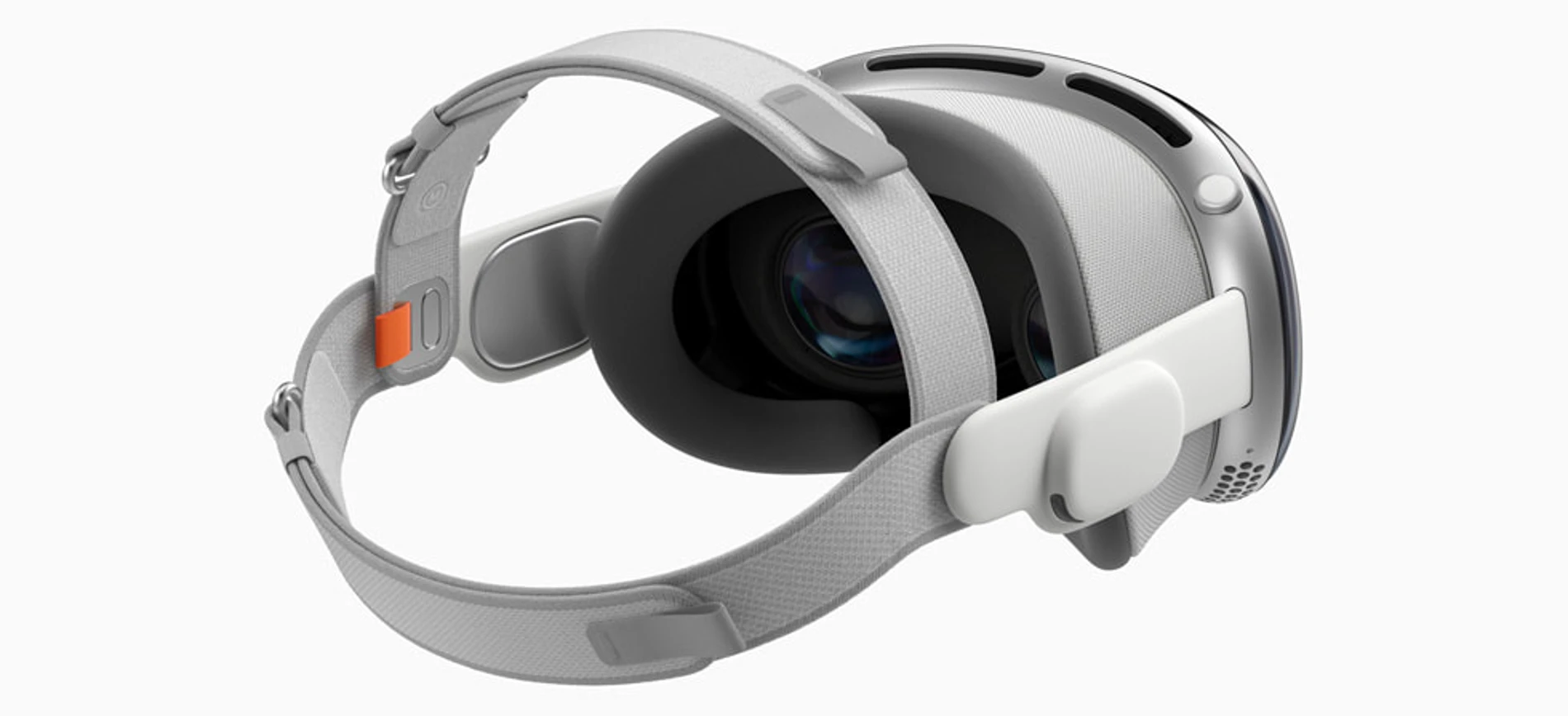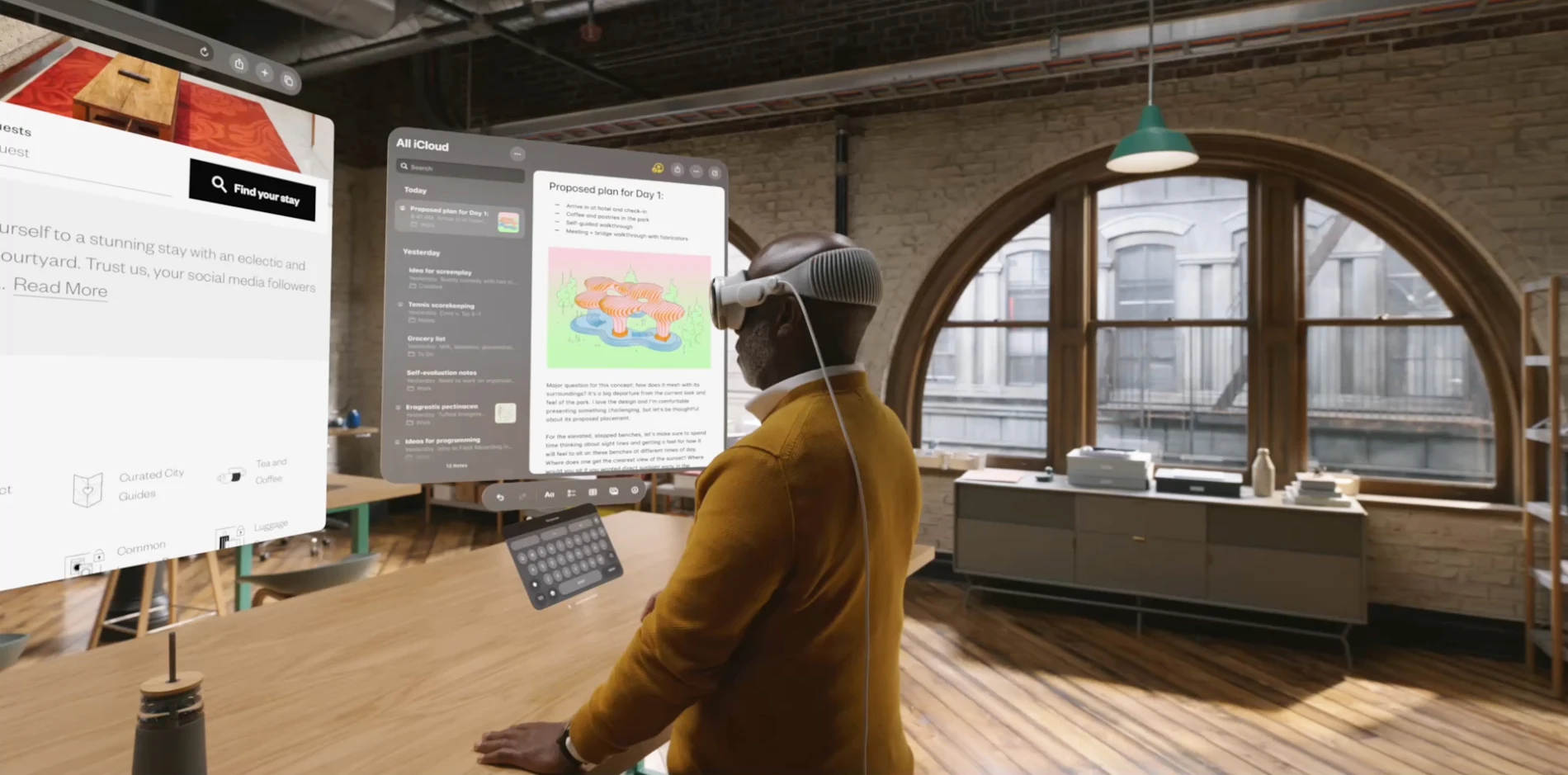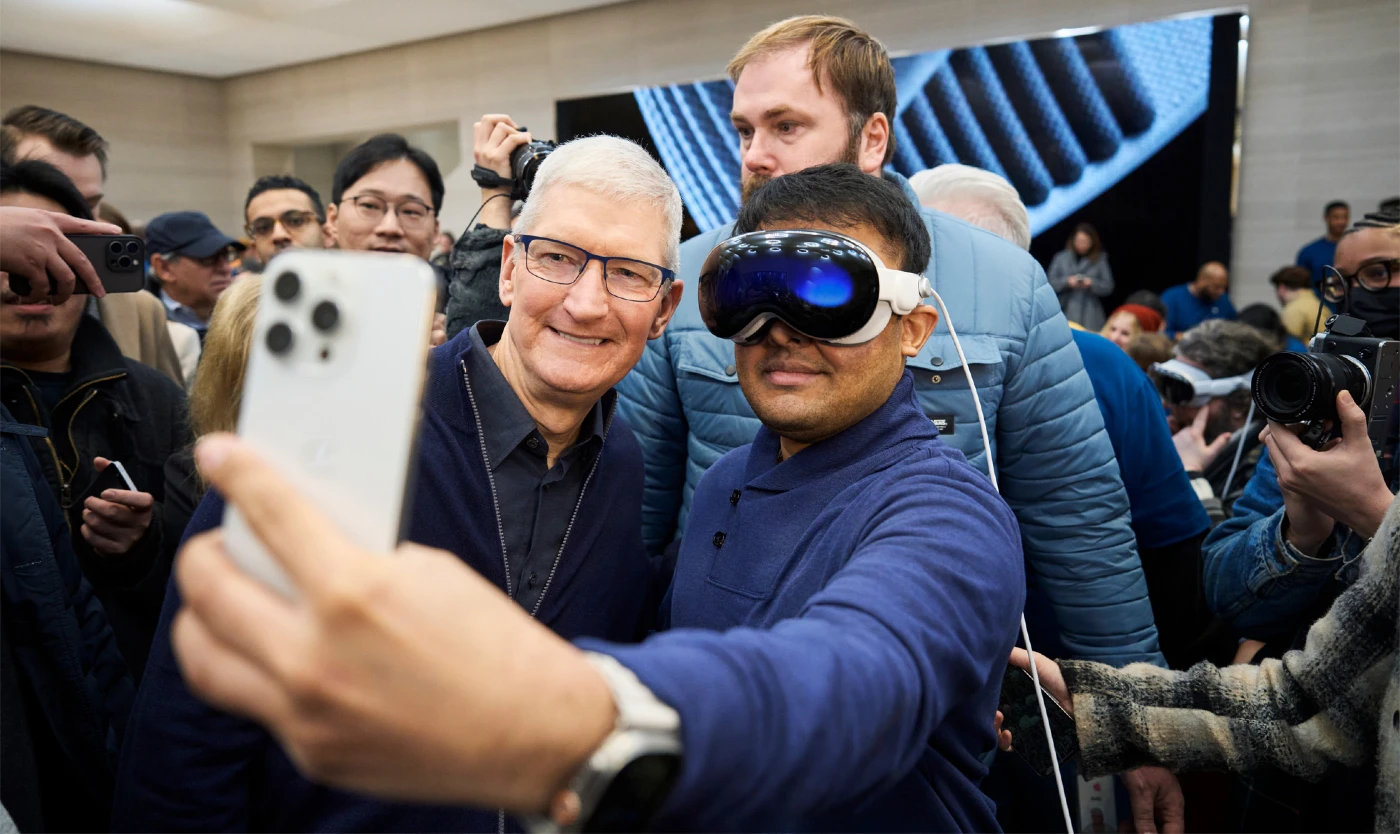Apple has launched its newest product, the Vision Pro, a virtual reality headset, which became available in Apple stores Friday in the United States.
CEO Tim Cook welcomed waiting customers at Apple’s New York City Flagship store to unveil the company’s first new product in seven years.
Apple is marketing its product as a “revolutionary spatial computer” that will change how people “work, collaborate, connect, relive memories, and enjoy entertainment.”
Apple Vision Pro seamlessly blends digital content with the physical world and unlocks powerful spatial experiences in visionOS, controlled by the most natural and intuitive inputs possible — a user’s eyes, hands, and voice.
An all-new App Store provides users with access to more than 1 million compatible apps across iOS and iPadOS, as well as more than 600 new experiences that take advantage of the unique capabilities of Vision Pro.

The headset itself looks like a pair of designer ski goggles. It features a soft adjustable strap on the top, a “digital crown” on the back — a bigger version than what you’d find on an Apple Watch — and another digital crown on the top that serves as a kind of home button.
The setup process is first. The headset tracks the eyes, scan hands and maps the room. Users will then see an iOS-like interface placed in front of their environment.
By using eye movements and touching the thumb and pointer finger together, it activates a “select” button, allowing people to seamlessly go in and out of apps, such as Messages, FaceTime, Safari and Photos. The interface also responds to voice to activate Siri.
Photos can be viewed at life size or as if you’re watching them on a giant movie screen. Panoramics, meanwhile, place you directly within the scene. Vision Pro also offers a spatial photo option, which lets users view images and videos in 3D for an even more life-like experience.
Use cases for the Vision Pro vary from cooking and meditating to working. Users can sync up their Mac computer to turn the screen into an enormous display and connect a physical keyboard.
To maximize productivity, it’s possible to have several windows open at once: Email can be kept on one side, a Safari browser opened perhaps in the middle and a FaceTime call on the right. If a user is wearing Vision Pro while on FaceTime, they appear as a Persona, or an avatar-like digital representation of their face.
Apple has taken steps to reduce the motion sickness problem that has plagued other headsets, thanks to a custom chip that cuts down on the latency issue found in similar products. Vision Pro includes surround sound, with audio pods that sit outside the ears to deliver rich immersive audio.

The Apple Vision Pro comes with a hefty price tag. Headsets start at $3,499 for 256 gigabytes of storage. The headset with the largest amount of storage, 1 terabyte, costs $3,899.
Customers who require vision inserts may have to pay more, while ZEISS Optical Inserts for “Readers” cost an additional $99, while prescription inserts for the headset cost $149.
Apple is providing a payment plan for customers. The basic headset would cost $291.58 per month over 12 months.
In normal Apple fashion, customers are also encouraged to purchase AppleCare+ coverage, which protects their headset for unlimited repairs and accidental damage protection for two years. It costs $499 or $24.99 a month.
Customers looking to purchase a headset can book an in-store demo at a local Apple Store, or purchase the equipment online.
When purchasing the device online, Apple asks users to use an iPhone or iPad to measure their head with Face ID, so the headset can be fitted with the correct sized bands.
Customers can book an in-store demo, discover, and buy Apple Vision Pro at their local Apple Store, as well as on apple.com and the Apple Store app.



